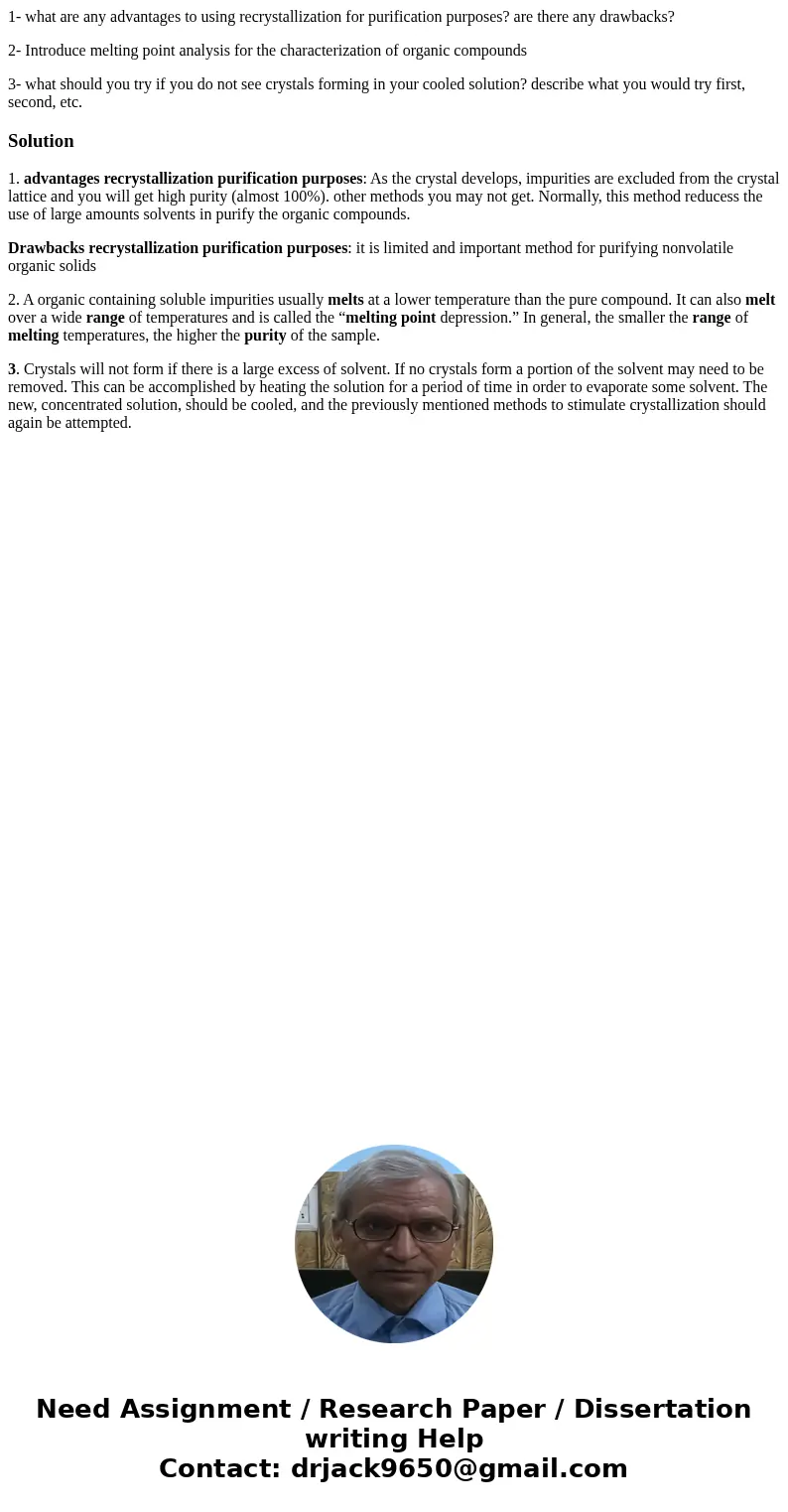1 what are any advantages to using recrystallization for pur
1- what are any advantages to using recrystallization for purification purposes? are there any drawbacks?
2- Introduce melting point analysis for the characterization of organic compounds
3- what should you try if you do not see crystals forming in your cooled solution? describe what you would try first, second, etc.
Solution
1. advantages recrystallization purification purposes: As the crystal develops, impurities are excluded from the crystal lattice and you will get high purity (almost 100%). other methods you may not get. Normally, this method reducess the use of large amounts solvents in purify the organic compounds.
Drawbacks recrystallization purification purposes: it is limited and important method for purifying nonvolatile organic solids
2. A organic containing soluble impurities usually melts at a lower temperature than the pure compound. It can also melt over a wide range of temperatures and is called the “melting point depression.” In general, the smaller the range of melting temperatures, the higher the purity of the sample.
3. Crystals will not form if there is a large excess of solvent. If no crystals form a portion of the solvent may need to be removed. This can be accomplished by heating the solution for a period of time in order to evaporate some solvent. The new, concentrated solution, should be cooled, and the previously mentioned methods to stimulate crystallization should again be attempted.

 Homework Sourse
Homework Sourse